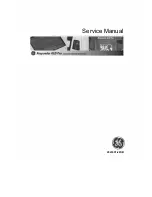
GUI Reference
R&S
®
ZNC
140
User Manual 1173.9557.02 ─ 13
Application:
Reflection measurements with conversion of the complex S-parameter to
a real SWR.
Remote command:
SWR
Unwrapped Phase
Selects a Cartesian diagram with an arbitrarily scaled linear vertical axis to display the
phase of the measured quantity.
Properties:
The stimulus variable appears on the horizontal axis, scaled linearly. The
phase of the complex quantity C, i.e. φ (C) = arctan ( Im(C) / Re(C) ), appears on the
vertical axis. φ (C) is measured relative to the phase at the start of the sweep (reference
phase = 0°). In contrast to the normal Phase format, the display range is not limited to
values between –180° and +180°. This avoids artificial jumps of the trace but can entail
a relatively wide phase range if the sweep span is large.
Application:
Phase measurements, e.g. phase distortion, deviation from linearity.
Tip:
After changing to the "Unwrapped Phase" format, use "TRACE > SCALE – Auto
Scale Trace" to re-scale the vertical axis and view the entire trace.
Remote command:
SWR
Lin Mag
Selects a Cartesian diagram with a linear vertical axis scale to display the magnitude of
the measured quantity.
Properties:
The stimulus variable appears on the horizontal axis, scaled linearly. The
magnitude of the complex quantity C, i.e. |C| = sqrt ( Re(C)
2
+ Im(C)
2
), appears on the
vertical axis, also scaled linearly.
Application:
Real measurement data (i.e. the Stability Factors and the DC voltages) are
always displayed in a Lin Mag diagram.
Tip (alternative formats):
The magnitude of each complex quantity can be displayed on
a logarithmic scale. It is possible to view the real and imaginary parts instead of the
magnitude and phase.
Remote command:
MLINear
Inv Smith
Selects an inverted Smith chart to display a complex quantity, primarily a reflection S-
parameter.
Properties:
The Inverted Smith chart is a circular diagram obtained by mapping the pos-
itive complex semi-plane into a unit circle. If the measured quantity is a complex reflection
coefficient (S
11
, S
22
etc.), then the unit Inverted Smith chart represents the normalized
admittance. In contrast to the polar diagram, the scaling of the diagram is not linear.
Application:
Reflection measurements, see example in
chapter 3.2.4.5, "Inverted Smith
Trace Settings
















































